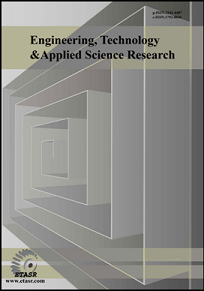
Journal Abbreviation
Eng. Technol. Appl. Sci. Res.
eISSN
1792-8036
pISSN
2241-4487
Scopus CiteScore 2024
2.9
Scopus SJR 2024
0.332
Scopus SNIP 2024
1.196
Scopus Quartile Ranking 2024
Q2
Crossref Membership
DOI prefix: 10.48084
Direct DOI link:
https://doi.org/10.48084/etasr
Citation Styling
Available in the official Zotero Style Repository (add it from inside Zotero or download the csl file)
RIS/BIB Files
Download links available in each article's abstract page.
Additional Information
For Readers
For Authors
For Librarians
Announcements
See all our announcements here.
[ETASR cover artwork created by our late friend, the great N. Tsagkarakis. Download HR here]
